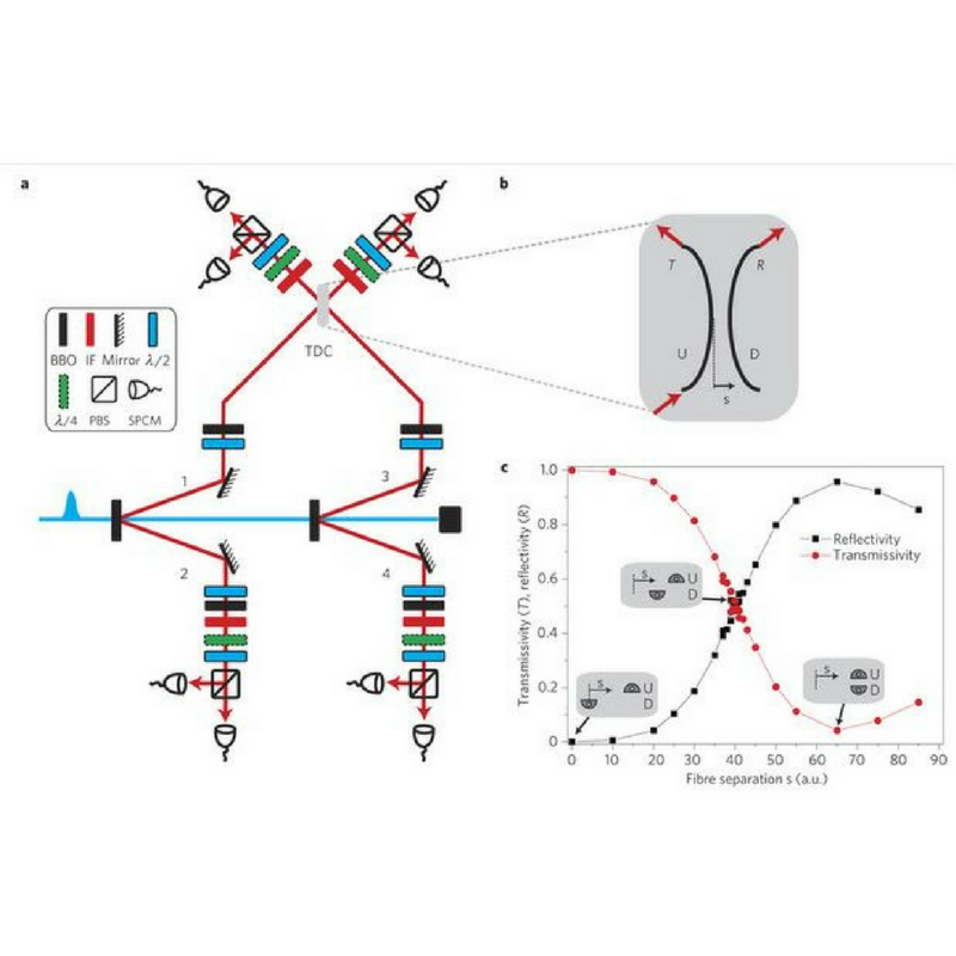You can find the online document here.
Publication appeared in Nature Physics

a, Femtosecond laser pulses (≈140 fs, 76 MHz, 404 nm) penetrate two β-barium borate (BBO) crystals generating two pairs of photons in the spatial modes 1 and 2 and 3 and 4 (twofold coincident count rate per pair ≈20 kHz). The walk-off effects are compensated with a half-wave plate followed by a BBO crystal in each mode. The photon’s spectral and spatial distinguishability is erased with interference filters (IFs, FWHM=3 nm) and single-mode fibres. The polarization of each photon is analysed by a combination of a quarter-wave plate, a half-wave plate and a polarizing beam splitter (PBS). Single photons are detected by single-photon counting modules (SPCMs). b, Schematic diagram of the fibre-based tunable directional coupler (TDC). The view from the top of the TDC illustrates the dependence of the coupling of the evanescent light on the separation of the fibres. The coupling between these two fibres is controlled by adjusting the horizontal position of the D fibre. c, Experimental calibration of the TDC’s transmissivity (red circles) and reflectivity (black circles) with respect to the position of the D fibre(s) is carried out by using weak laser beams and an SPCM. The separations of the fibres for 0%, 50% and 100% transmissivity are shown in the insets. The experimental imperfections originate mostly from detector dark counts, and the error bars, smaller than 0.5% of the mean values, are based on a Poissonian distribution.
